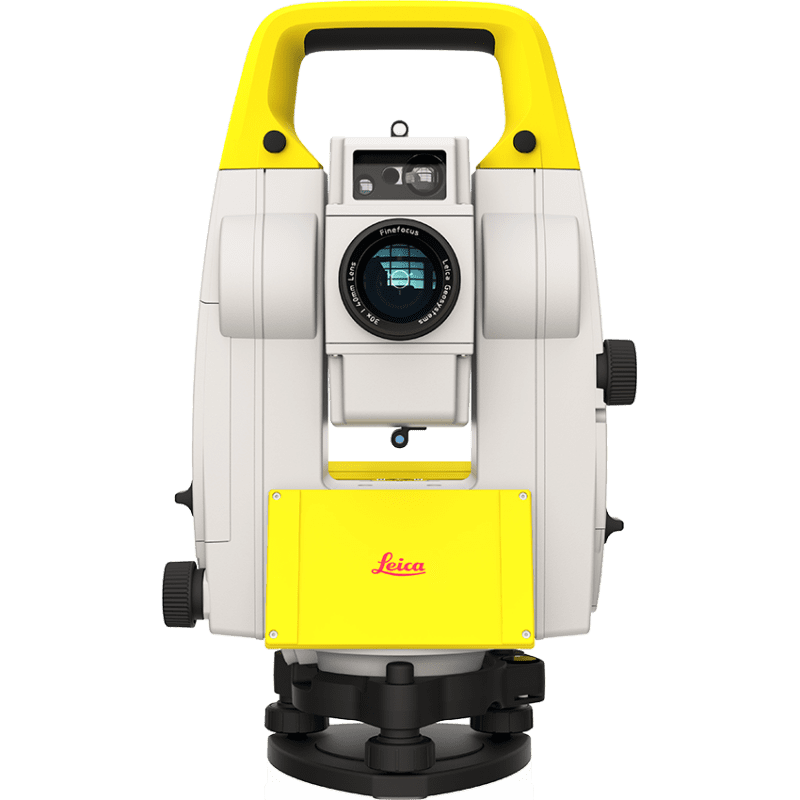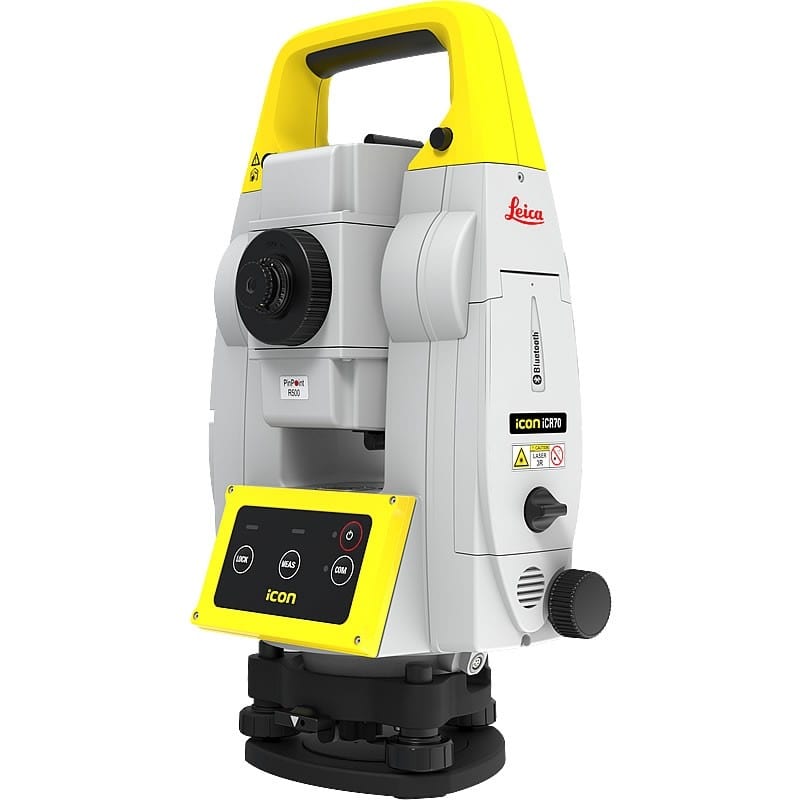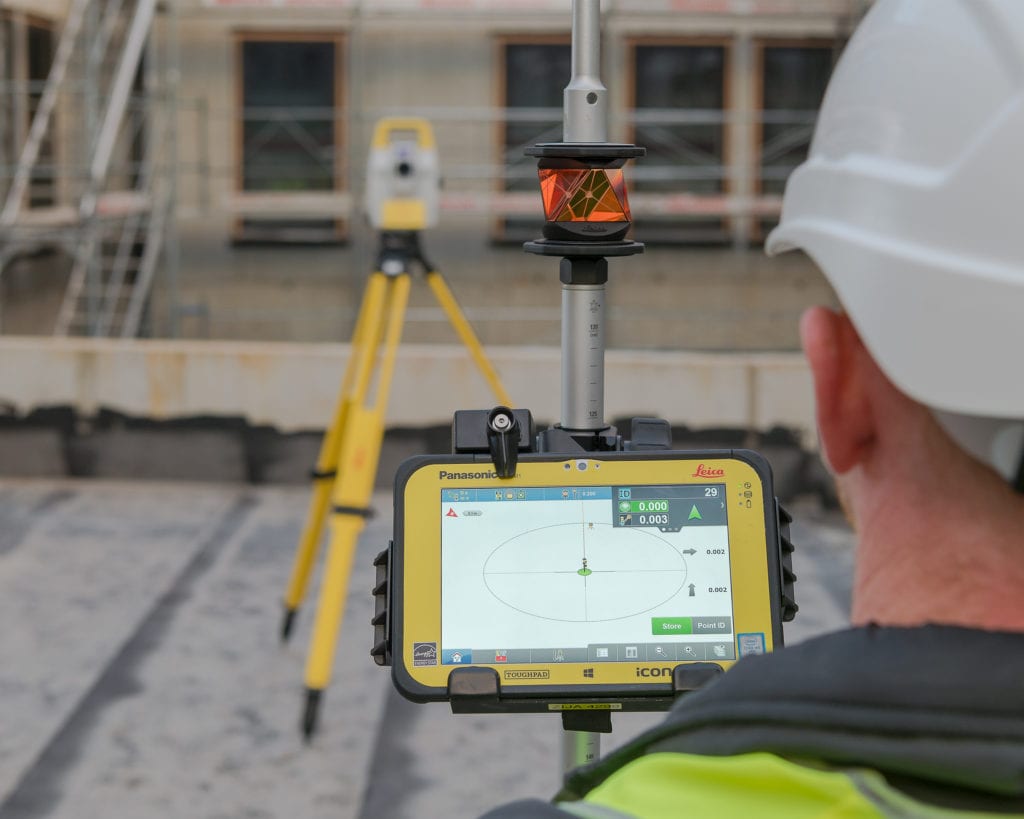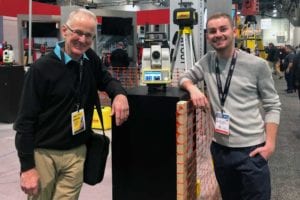
Robotic total stations have revolutionized modern construction methods, offering unprecedented precision and efficiency in data collection and measurement. These advanced instruments combine laser technology with automated tracking systems to capture accurate spatial information using a prism target. By eliminating the need for manual operation, robotic total stations significantly boost productivity on construction sites, allowing for faster and more reliable surveying and layout tasks.
In this article, we'll explore the numerous benefits of robotic total stations and how they're transforming the construction industry.
As a construction professional, I've witnessed firsthand how robotic total stations have revolutionized our industry. These advanced devices combine the precision of traditional total stations with the efficiency of robotics, streamlining our workflow and enhancing accuracy on job sites.
In this section, I'll delve into the intricacies of robotic total stations, exploring their functionality, benefits, and how they compare to other surveying tools. We'll examine the technology behind these sophisticated robots, their measurement techniques, and the level of accuracy they provide. Understanding these aspects is crucial for anyone looking to integrate these powerful tools into their construction projects.

A robotic total station is an advanced surveying instrument that combines traditional total station capabilities with automated motorized movement and sophisticated software. I've found these devices to be incredibly useful on construction sites, as they can measure angles, distances, and coordinates with high precision. The integration of robotic technology allows for remote operation, reducing the need for manual positioning and improving efficiency.
The key feature that sets robotic total stations apart is their ability to track a target automatically. This technology enables a single operator to control the instrument from a distance, often using a data collector or tablet. I've seen how this capability dramatically speeds up surveying processes and reduces labor costs on projects.
Modern robotic total stations often incorporate additional features such as 3D scanning capabilities and integration with satellite navigation systems. These advancements have expanded their functionality beyond simple measurements, making them versatile tools for various construction and engineering applications. Here's a breakdown of the main components of a robotic total station:
| Component | Function |
|---|---|
| Motorized base | Allows automated rotation and targeting |
| Electronic distance meter | Measures distances with high accuracy |
| Angle sensors | Measure horizontal and vertical angles |
| Onboard computer | Processes measurements and runs software |
| Remote control unit | Enables operation from a distance |


Robotic total stations offer unparalleled accuracy and precision in surveying and construction projects. These advanced instruments surpass traditional theodolites by combining automated tracking with precise measurement capabilities.
The integration of robotic technology allows for seamless operation, often requiring just a simple login to access advanced features and functionalities.
Another significant advantage I've experienced is the increased efficiency in data collection. Robotic total stations can work alongside other technologies like LiDAR, providing comprehensive site information.
The ability to operate these devices remotely from a single tripod setup has dramatically reduced the time and manpower required for surveying tasks.
Robotic total stations significantly minimize human error. Their automated tracking and measurement systems ensure consistent results, even in challenging environments. This reliability has proven invaluable in complex construction projects where precision is paramount.
As an engineer, I've found that robotic total stations operate on a sophisticated combination of laser technology and precise motors. These devices, like those from Topcon, use a laser to measure distances and angles to a prism or reflective target. The robotic aspect comes into play with motorized servos that allow the instrument to rotate and track the target automatically.

The usability of these systems has greatly improved over the years. Modern robotic total stations integrate seamlessly with data collectors and field software, allowing for real-time data processing and visualization. This integration has revolutionized engineering workflows, enabling instant adjustments and calculations on-site.
In my experience, the true power of robotic total stations shines in their compatibility with building information modeling (BIM) systems. I can directly import survey data into BIM software, creating accurate 3D models of construction sites. This seamless data flow has significantly enhanced our ability to plan, design, and execute complex building projects with unprecedented precision.
In engineering work, robotic total stations streamline data collection and processing. They can automatically record measurements, perform calculations, and even integrate with design software. This integration allows for real-time comparisons between actual site conditions and design plans, greatly improving efficiency and accuracy in construction projects. The workflow typically involves:

Total stations measure distance using sophisticated optics and electronic distance measurement (EDM) technology. The machine emits a laser or infrared beam that reflects off a prism or reflective target and returns to the instrument. By measuring the time, it takes for the signal to return, the total station calculates the distance with remarkable precision.
Calibration is crucial for maintaining the accuracy of a total station's distance measurements. I regularly perform field checks and adjustments to ensure the instrument's EDM system remains within specified tolerances. This process involves comparing measurements to known baseline distances and making necessary corrections through the instrument's interface.
As a surveying tool, the total station's ability to measure distance forms the foundation for many other functions. I've utilized this capability in conjunction with angle measurements to determine coordinates, calculate areas, and perform complex layout tasks on construction sites. The integration of distance measurement with other features makes the total station an indispensable instrument in modern construction and engineering projects.
Total stations are incredibly accurate tools for construction layout. Modern robotic total stations can measure distances with precision up to 1-2 millimeters over distances of several hundred meters. This level of accuracy is crucial for ensuring structural integrity and compliance with design specifications in complex construction projects.
The accuracy of a total station depends on various factors, including the quality of the instrument, environmental conditions, and proper calibration. I always ensure my total station is calibrated regularly and protected from extreme temperatures and vibrations during data collection. While high-end models with a higher list price generally offer superior accuracy, I've achieved excellent results with mid-range options when used correctly.
Advancements in onboard computers and data processing have significantly enhanced the accuracy of total stations. I can now perform real-time error checking and adjustments in the field, reducing the need for post-processing. Some models even come with a built-in cart for easy transportation, allowing me to maintain the instrument's stability and accuracy as I move around large construction sites.

The key difference lies in their capabilities. A theodolite primarily measures angles using a telescope, while a total station combines angle measurement with electronic distance measurement (EDM) technology. This integration allows total stations to provide more comprehensive information about spatial relationships on construction sites.
On other hand, total stations offer superior efficiency and versatility compared to theodolites. They can quickly calculate coordinates and elevations, streamlining data collection and reducing the need for manual calculations. When you need to request a quote for a project, always consider the time savings and increased accuracy that a total station provides over a traditional theodolite.
Another advantage of total stations is their advanced features, such as onboard data storage and compatibility with various software systems. Unlike theodolites, which often require manual recording, total stations can seamlessly transfer data to computers for further analysis. Additionally, modern total stations come with rechargeable batteries and efficient battery chargers, allowing for extended field use without interruption.
Total stations offer superior efficiency and versatility compared to theodolites. They can quickly calculate coordinates and elevations, streamlining data collection and reducing the need for manual calculations. When requesting a project quote, consider the time savings and increased accuracy provided by a total station over a traditional theodolite. Another advantage of total stations is their advanced features, including onboard data storage and compatibility with various software systems. Unlike theodolites that often require manual recording, total stations seamlessly transfer data to computers for further analysis. Modern total stations also come with rechargeable batteries and efficient chargers, allowing for uninterrupted extended field use.
Robotic total stations significantly enhance construction accuracy by providing precise measurements and real-time data. These advanced instruments use laser technology to calculate distances, angles, and coordinates with millimeter-level precision. This level of accuracy ensures that structures are built exactly to specifications, reducing errors and costly rework. Furthermore, robotic total stations automate many surveying tasks, eliminating human error in measurements. They can track moving targets, allowing for continuous monitoring of construction progress. This constant stream of accurate data enables project managers to make informed decisions quickly, improving overall project efficiency and quality.
Robotic total stations can indeed be operated by a single person. These advanced surveying instruments combine the capabilities of an electronic theodolite with an electronic distance meter, allowing for precise measurements and data collection without the need for a second operator. The robotic functionality enables remote control of the instrument, typically through a handheld controller or tablet. This allows the surveyor to move freely around the site, setting up targets and collecting data points while controlling the total station from a distance, significantly increasing efficiency and productivity in the field.
Robotic total stations excel in large-scale construction projects like skyscrapers, bridges, and highways. These complex structures demand precise measurements and continuous monitoring, which robotic total stations provide with unparalleled accuracy and efficiency. Residential and commercial building projects also benefit greatly from robotic total stations. They streamline layout processes, ensure accurate positioning of walls and foundations, and facilitate seamless integration of building information modeling (BIM) technologies, ultimately saving time and reducing costly errors.
Robotic total stations offer significant advantages over traditional construction layout methods. These automated systems provide higher accuracy, faster data collection, and reduced labor costs. With remote operation capabilities, a single surveyor can control the instrument from a distance, increasing efficiency and safety on job sites. Traditional methods rely on manual measurements and multiple crew members, which can be time-consuming and prone to human error. While they may be suitable for smaller projects, robotic total stations excel in large-scale surveys, complex terrain, and projects requiring frequent position updates. The initial investment is higher, but the long-term benefits often outweigh the costs.
If you’re looking for an accurate tool that will save you time on your next project or have any questions about robotic total stations? Contact us at 319-320-4982 and we will be happy to assist you.

Leaving so soon?
Get Your Free Ultimate Buyer's Guide to Total Stations!
Unlock expert insights and make the right choice for your construction layout needs.
